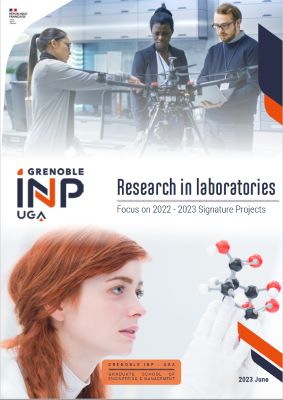Every year the paper industry produces approximately 150 million tons of cellulose from wood. The sub-products of this operation production are used to meet its energy requirements. Cutting back on its power generation would help the industry to better exploit the sub-products, in particular by recovering the hemicellulose that makes up 20 to 25% of the plant matter, and a part of the lignin which represents 30% of the wood.

Several projects are currently underway at Grenoble INP - Pagora, and at the LGP2 (the laboratory of pulp and paper sciences and graphic arts), among others, with a view to determining the various ways of achieving this objective. The “Biorefinery: chemistry and eco-processes” team is working on processes to extract the matter which is traditionally dissolved and burnt during manufacture of the pulp and on recovering it as bioproducts, biomaterials or biofuels. “The idea is to recover the hemicellulose in different forms before it is degraded, explained Christine Chirat, lecturer at Grenoble INP - Pagora and head of the Biorefinery: Chemistry and Eco-processes team at LGP2. Sugar monomers whose nature and potential uses vary depending on the wood species can notably be extracted from the hemicellulose”. The sugars derived from hemicellulose may be recovered as surfactants for example (refer to box on the Sucrol project), as bioethanol or as “green” plastics as is the case within the context of the Polywood project initiated in 2012 in partnership with Schneider Electric (link).
An important project relating to the gasification of lignin to produce energy and phenolic compounds, Enerlig, is ongoing with CEA Liten. Finally, several projects are working on purifying the cellulose for chemical and textile applications.
An important project relating to the gasification of lignin to produce energy and phenolic compounds, Enerlig, is ongoing with CEA Liten. Finally, several projects are working on purifying the cellulose for chemical and textile applications.





